On Thursday 2nd October 1890, The Pall Mall Gazette published an article written by one of its reporters who had recently paid a visit to Whitechapel and had taken the time to visit the various sites that, over the previous two years, had become indelibly linked in the public consciousness with the name of Jack the Ripper and the horrific plights of his victims.
The article was headlined:-
MURDERLAND REVISITED
A TOUR OF JACK THE RIPPER’S HAUNTS IN WHITECHAPEL
The subsequent report went into an immense amount of detail about the appearance of the various murder sites as they confronted the journalist on his tour of Jack the Ripper’s East End in 1890.
The article began:-
“It is announced to-day that “the police are taking extra precautions in Whitechapel this week.”
For such precautions there is plenty of room.
It is now just two years ago since “Jack the Ripper” was busy with his devil’s work in Whitechapel, but next to nothing has yet been done in any one instance to prevent another murder taking place to-morrow night, on any one of the selfsame spots on which a mutilated corpse once lay.
Again, although at the time of, and for some weeks after, the murders nearly every other person that one ran against in Whitechapel was either a uniformed or a plain-clothes policeman, their numbers were gradually reduced with the subsidence of the scare, until the force stationed in Whitechapel to-day is just about the same in point of numbers as when the assassin’s knife first commenced its deadly work, and in point of efficiency, probably even worse.
These are strong and even startling statements to make, but they are supported by a close personal investigation which has been undertaken on behalf of the Pall Mall Gazette throughout the length and breadth of Murderland.”
A VISIT TO GEORGE YARD
The first location that the reporter visited was George Yard. It was here on the 7th of August 1888 that the body of Martha Tabram was discovered on a first floor landing of a tenement block named George Yard Buildings. Interestingly, the reporter refers to it as “a common lodging house” as opposed to the tenement block that it in fact was.

HIS IMPRESSION OF GEORGE YARD
This is what he had to say about it:-
“I went first to the scene of the very first murder – the landing of the common lodging-house in George-yard, where Martha Tabram’s dead body, shockingly mutilated, was found on the morning after a Bank Holiday.
It is true that, on the recommendation of the coroner’s jury who investigated the circumstances of her death, a lamp was fixed there, and it is true also that it exists at the present time.
But then, lamps can’t be alight all night in common lodging-houses – so the landlords say – and, if what some of the tenants say be true, after eleven or twelve o’clock at night the lamp is turned out, and in every essential respect the landing assumes the appearance it bore when Martha Tabram was done to death there.
Yet it was between two and three o’clock in the morning when she was murdered.
Policemen seldom if ever visit that landing now: it is no part of their beat, and the only contingency to be faced by any would-be murderer who should take his victim there after midnight to-morrow would be the arrival of one of the occupants of the upstairs tenements.
And even that contingency is a very improbable one, for the occupants are nearly all of them unskilled labourers, the exigencies of whose work leave them no opportunity for midnight dissipations.”
THE MARY NICHOLS MURDER SITE
The intrepid reporter then made his way to Buck’s Row, where Mary Nichols had been murdered on August 31st 188.
Oddly, he doesn’t seem to have been too familiar with the names of the victims since, in Mary Nichols case, he gets the name wrong and refers to her as Annie Hyde.
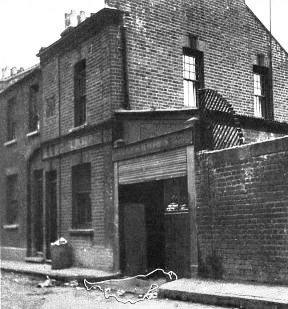
HIS DESCRIPTION OF BUCK’S ROW
This is what he had to say about the murder scene as it appeared during his visit in October 1890:-
“Then, take next, that blank wall in Buck’s-row where the next victim was butchered.
Nothing whatever in the way of change of any kind has taken place there.
The wall is just as blank, the light at night is just as indistinct, and the Row at midnight is just as denuded of civilians and policemen as when the unfortunate woman Hyde was stabbed and mutilated there.
It was rare, even before the murder, to find any pedestrians in Buck’s-row after midnight; it always had a bad name for robberies and assaults; and it was given up by general consent to the cluster of houseless unfortunates who were in the habit of sleeping there.
After the tragedy even the unfortunates fled from it, and its pavements only resounded at night to the measured tread of the temporary police patrol.
But now the unfortunates have forgotten the fate of their “pal,” the police patrol has been withdrawn, and passers-by at night are rarer than ever.
It might, perhaps, be a slight exaggeration to say that the murderer of Annie Hyde would find it just as easy to repeat his hellish work to-morrow night, for a police “point” has been established a little nearer Buck’s-row than formerly; but this at all events can be safely said – that the operation would be attended with but the merest fraction of increased difficulty.
A curious illustration – or rather, proof – of this statement occurred in the course of my investigation.
A WOMAN’S SCREAMS
At about one o’clock on one morning I happened to be near Buck’s-row when my attention was attracted by violent screaming, evidently proceeding from that locality.
I proceeded there and found, lying on the pavement within twenty yards of the scene of the murder, a woman evidently pretty far gone in drink. She was bleeding from a wound in the temple, sustained, perhaps, in her fall to the ground, and had taken to an hysterical fit of screaming.
It was actually between four and five minutes before a policeman arrived on the scene to know “what all the row was about.” He tried, on finding her condition, to “move her on,” but the woman violently resisted, and even attacked him. Assistance was evidently necessary then to take her to the police station, and the writer, with hearty goodwill, set about blowing a police-whistle which he had with him. Yet, with all that hullabaloo, another three minutes were required for a second policeman to put in an appearance.
It was only a drunken woman, you say?
True.
But, it might have been a victim screaming in her last agonies, and eight minutes to get two policemen together on the very scene of a former murder is a big start to give the quick-heeled Ripper.
It would make all the difference between his capture and his getting safely off with another murder added to his long record.”
HIS VISIT TO MITRE SQUARE
The reporter’s next destination was Mitre Square, scene of the murder of Catherine Eddowes on 30th September 1888.
Mitre Square was, and still is, in the City of London, and was thus within the jurisdiction of the City of London Police. Evidently, the reporter had a more favoured opinion of the City Police than he did of their Metropolitan Police counterparts.
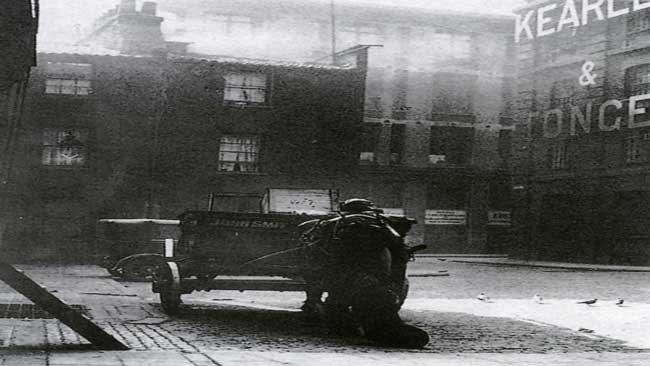
HIS VIEW OF MITRE SQUARE
“Mitre-square – the scene of probably the worst butchery of all – is undoubtedly better patrolled than it used to be; the beats have been shortened, the policeman’s bullseye flashes its light all round the square far too frequently to allow of such a deliberate and cold blooded butchery as occurred there before.
But then the Metropolitan police force can take no credit for that.
The credit, if any, belongs to the very much better organized and much more adequate City police.”
THE ELIZABETH STRIDE MURDER SITE
Having cast what seems to have been a quick and cursory glance over Mitre Square, the journalist then headed over to Berner Street, where Elizabeth Stride had been murdered just 45 minutes before the body of Catherine Eddowes was discovered in Mitre Square,
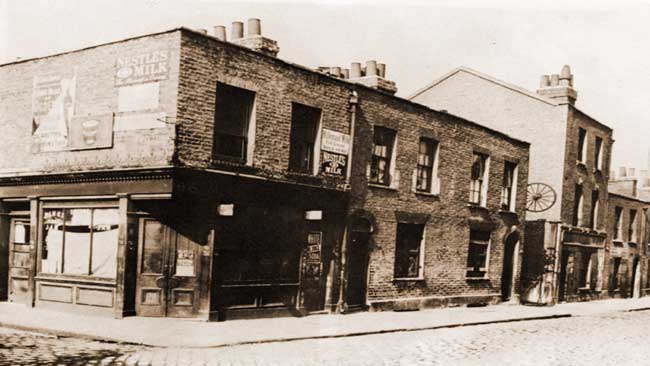
HIS DESCRIPTION OF BERNER STREET
“The self-same Sunday morn that heralded the discovery of the Mitre-square victim was the one that found another unfortunate lying in the gateway in Berner-street, St. George’s East, with her throat cut.
It is true that since that time the gateway has been religiously closed after the last van has entered it.
But then the vans are sometimes very late in arriving, and what is there to prevent a murderer decoying another victim there?
When you push open the gate it is as dark as Erebus; when the gate is pushed back there is an effectual screen from any prying passer-by, although passers-by, who are constituted very largely of the foreigners who reside in the locality, are far too scared to ever peep inside that gate with its terrible history; and, finally, there is always singing or some other form of entertainment going on at the International Club next door to effectually drown a faint shriek.
But what about the policeman on the beat, you say?
The police on that beat have got so tired of opening that gate and finding nothing there since the murder that they have long ago despaired of ever finding anything, and consequently pass it now with the most complete indifference.
And, even should, by the most remote possibility, the murderer be disturbed by anybody opening the gate from the street entrance, he is by no means caught in a trap, for there are plenty of backyards that can be scaled, and a great many courts and passages, leading to Berner and other streets, to be easily reached.
On the whole, then, that gateway in Berner-street would form a very safe place for any operations of the Ripper just now.”
ACROSS TO HANBURY STREET
He next paid a visit to Hanbury Street, where the body of Annie Chapman was found in the backyard of number 29 on the monring of the 8th September 1888.
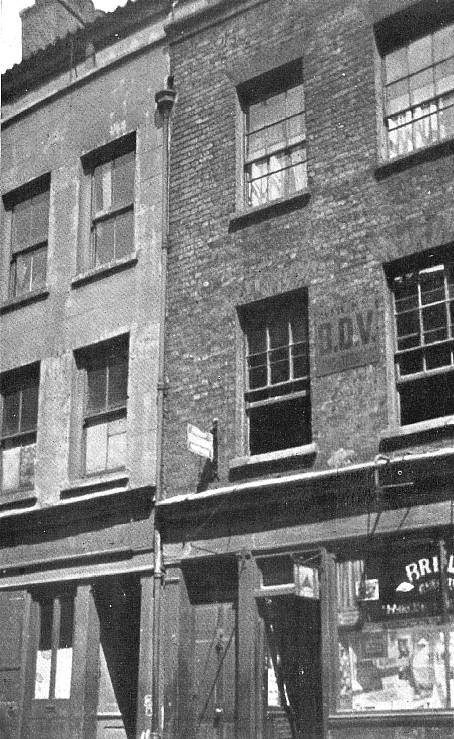
HIS DESCRIPTION OF HANBURY STREET
“Next, there is that mysterious house in Hanbury-street at which the world looked askance when the evidence given at the inquest on the disembowelled body found in its backyard revealed the fact that unfortunates, somehow or another, seemed to possess a right of way through the passage, and so into the yard.
One would have thought that, after such a revelation as that, some steps would at least have been taken to put a stop to such a scandal.
But no. After midnight there is nothing whatever to prevent anybody from lifting the latch of the door and proceeding, by way of the passage, to the very spot where the Ripper in a paroxysm of fury plucked out the entrails of another victim.
The reason is obvious. The premises are nothing more than a “doss” house on a small scale; its residents change nearly every day, and nobody would presume to question the right of any one to pass through the passage and so into the fateful yard, where, as before, a murder could be committed now with comparative impunity.
And yet, what an outburst of popular indignation there would be if another butchery occurred on the self-same spot that reeked before with the blood of a murdered woman!”
TO DORSET STREET MARY KELLY’S MURDER
The next stop on his itinerary was Dorset Street, where he paid a visit to Miller’s Court, scene of the murder of Mary Kelly on the 9th November 1888.
Again, he seems to have not been 100% conversant with the full facts of this murder as he suggests that it was the ripper that “decoyed” his victim to the location, whereas, in reality, it was probably Mary Kelly ho took her murderer to what was, in fact, her room.
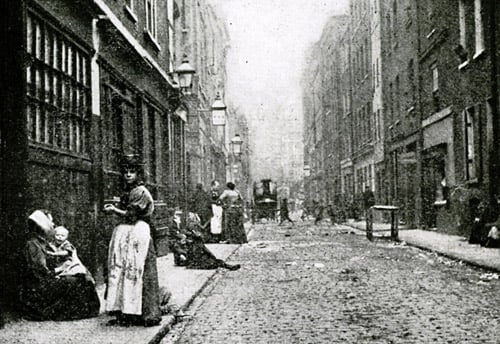
HIS OPINION OF DORSET STREET
What is true of the house in Hanbury-street is true also, though in a lesser degree perhaps, of the lodging-house in the court off Dorset-street, where the discovery of another mutilated victim cast a gloom on the Lord Mayor’s festivities of two years ago.
It was the boldest stroke of all when the Whitechapel fiend decoyed his victim there.
And what boldness – or rather absolute wantonness – accomplished before, it can doubtless accomplish again.”
OTHER MURDER SITES
Having dealt with the scenes of the murders of the so-called “canonical five” victims, the reporter paid a visit to Castle Alley, which ws the scene of the murder of Alice McKenzie in July 1889:-
“There is some prospect at last of the vile hole known as Castle-alley, where the last murder occurred, being swept off the face of the earth, for the Whitechapel Board of Works have lately decided to convert it into a public thoroughfare.”
THE PINCHIN STREET ARCH
Then, he headed over to Pinchin Street, where the torso of an unidentified woman had been discovered underneath a railway arch
“But the archway in Pinchin-street remains in precisely the same condition in which it appeared when the sackful of human remains was found beneath it.
That archway, it may be remembered, forms but one of several, some of which are partially boarded up from the street, and which form, at the present time, an acknowledged resort of unfortunates, who ply, almost undisturbed, their degraded trade there.”
THE MORTUARY
He then went on to present us with an, equally unflattering, view of the mortuary to which the bodies of several of the victims were taken in the aftermath of their murders:-
“Even the miserable little shed, with its worm-eaten boards and its utter tack of any conveniences for post-mortem or other examinations, despite the lashings of humanitarian and sanitarian writers which the local authorities were at one time compelled to undergo, remains just the same now as when the juries were ushered into the “mortuary,” as it is called with the grimmest of humour, to examine the dead bodies of the victims deposited there.
Or rather, to speak the literal truth, the shed is more mouldy, more foul-smelling, more worm-eaten, and more useless for its purpose than ever.
It is but fair to say, however, that the Board of Works have got so far as the plans and the site of a new mortuary – and not, assuredly, before it was needed.”
WHAT IF THE RIPPER RETURNED?
Finally, the reporter went on to lament the fact that, were Jack the Ripper to return to his murderous haunts in 1890, he would, depressingly, find conditions more or less unchanged:-
“But are the conditions precisely the same for the perpetration of murders as was the case two years ago – are intended victims to be decoyed as easily as then?” some sceptical reader may ask.
The personal investigations of the writer have convinced him that, should the Whitechapel Terror appear in our midst again, bent on the same murderous mission, he would find the conditions precisely the same as before, and his victims just as easily decoyed and just as numerous.”
THE PROSTITUTES STILL THERE
The reporter was extremely disparaging of the prostitutes that still worked the locales – and even the very sites – on which the ripper had slain his victims two years previously; and, in closing, he had this to say about them:-
“The unfortunate class in Whitechapel and St. George’s, or rather the lower unfortunate class, from whom the victims were chiefly recruited – for there are distinctions even in degradation – is just as numerous as ever it was.
They form the very dregs of humanity.
Better conditions of trade and better conditions of labour affect their numbers not at all.
They drift down through a life of shame until they become veritable pariahs even among the unfortunates in other parts of London; until the streets of Whitechapel become their only home, and immorality, in its very worst form, their only resource.
The very worst of disorderly houses will seldom open their doors to them, and the practising of their vile trade in the courts and alleys and archways of the district constitutes their only resource against absolute starvation.
Prowling through this district for the greater part of nearly every night, and sleeping for the rest of the night in one or other of these plague spots, they have the locality of each at their fingers’ ends, and long experience has made them equally well acquainted with the exact time at which the policeman on beat passes each of these places.
What need of decoying these creatures?
The very exigencies of their degraded calling make them accessories to their own murder.
God help them when they get in a would-be murderer’s hands.”
A FASCINATING ARTICLE
The article is of interest for several reasons, chief amongst them being the fact that it provides us with vivid descriptions of the various murder sites as they appeared just two years after the Jack the Ripper murders had occurred.
But, there is also the fact that, as he toured the locations, he encountered people who would have remembered the ripper crimes and, in so doing, he was able to leave us with an image of how those people had, apparently, learnt nothing from the horrors that the had occurred on the streets of Whitechapel and Spitalfields in the autumn of 1888.
